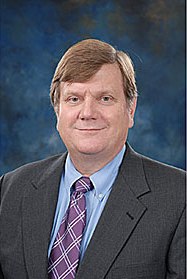
|
| Dr. Barry Lawrence |
Dr. Barry Lawrencewill present Sales and Marketing Optimization: Developing Competitive Value Propositions in Distribution on Oct. 2 at NetworkASA 2013 in Washington D.C.
Distributors are essentially sales and marketing organizations. Suppliers rely on distributors to provide market access and create demand (volume). Distributors operate off narrower margins and therefore cannot capture as much value from continuously growing volume.This leads to a natural conflict. Suppliers want distributors to push more and more product into the market, while distributors have to be more selective. The sales force is often motivated to follow the supplier’s model since most compensation methods are volume-based (gross margin or sales).
Growth is imperative. Distributors must grow to keep suppliers and investors happy. The investor, however, is interested in growth that provides a solid return on investment. The typical distributor has more potential investments than funds to invest, hence the need to be selective. The question is how to align the sales force, investors and suppliers. Funds to grow come from working capital, earnings and investor confidence. Working capital includes inventory and accounts receivable minus accounts payable. Investor confidence determines what percentage of earnings will be left in the business for growth. Proper working capital control frees up money for investment and wins investor confidence to reinvest as well.
A major manufacturer was disappointed because their distributors showed little interest in growing. An examination of their distributors’ financials revealed some unexpected problems. The distributors were averaging between 3% and 4% earnings (the numerator in the ROI equation). Inventory was turning about 4 times per year and receivables were turning a little more than 6 times.
When other assets were added in, the distributors were getting about an 8% return on their investment. Stock market index funds were outperforming these independent firms at much lower risk.
The supplier was continually pushing the distributor to sell more, carry more inventory (to avoid potential lost sales) and offer more of the supplier’s line card. The supplier set annual requirements on how much the distributor had to buy to get rebates. The rebates soon became a requirement to meet price competition. Lower prices meant narrower margins (a 20% markup on $80 is less than 20% on $100). The net result was a distributor network with declining margins and so clogged with assets that ROI plummeted.
Meeting these conflicting needs (supplier and investor) takes us back to sales and marketing efforts. The sales force has to be armed with the right value proposition (marketing) on the right products with the right customers. The distributor and supplier must start with growth initiatives that provide a solid return on investment. Finally, the distributor must aggressively work through their sales force to sustain the growth initiative.
Suppliers who play games to force more volume through their distributors may end up driving out investment. Both sides need to understand what makes each other successful and work on strategies for mutual success.
Dr. Barry Lawrence holds the Leonard and Valerie Bruce Endowed Chair and is the director of the Industrial Distribution Program, director of the Thomas and Joan Read Center and director of the Global Supply Chain Laboratory at Texas A&M University. Visit http://id.tamu.edu for more information.




